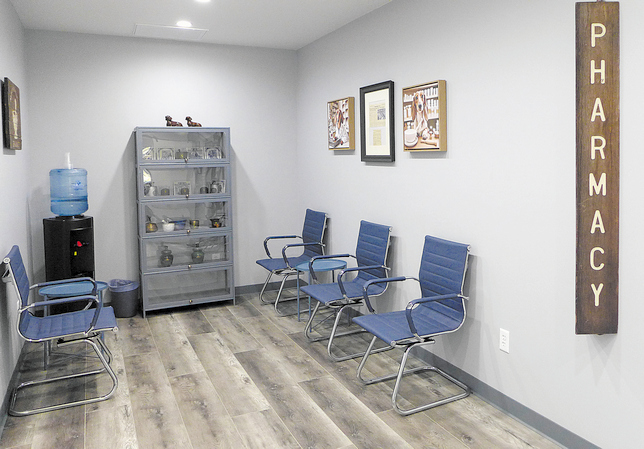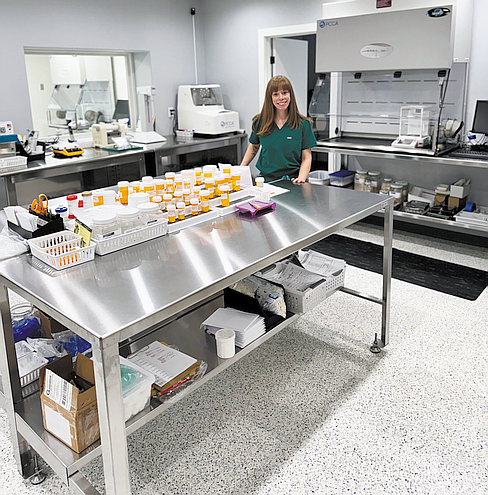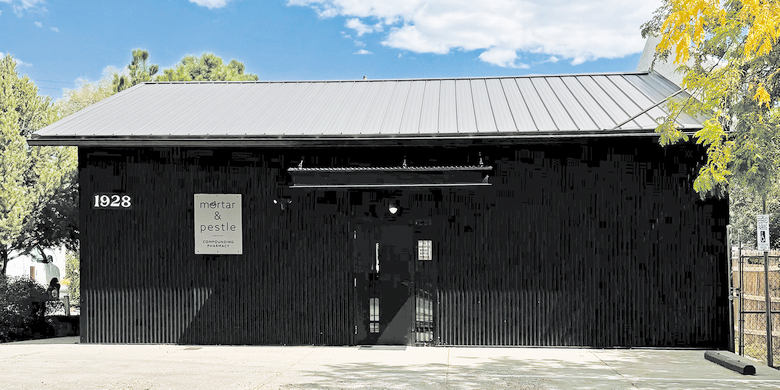By Kelsey Herring

Prescription compounding is a subset of pharmacy where a specially trained pharmacist prepares custom prescription medications to meet the needs of their community.
Compounding allows for patient-specific prescriptions, filling a gap left by large pharmaceutical manufacturing. It’s old-fashioned pharmacy.
Before large pharmaceutical companies were mass producing medications, prescriptions all had to be taken to a pharmacist to be made from scratch. Over the years, the industry of compounding has changed drastically, with retail pharmacies on every corner. Compounding is now considered a specialty.

There are two different types of compounding pharmacies: sterile and non-sterile. Non-sterile pharmacies can compound oral, topical, vaginal, and rectal prescriptions. This includes capsules, suspensions, creams, gels, nasal sprays, lozenges, suppositories and ear drops. Sterile pharmacies can compound everything that non-sterile pharmacies can, as well as injectable dosage forms and eye drops.
Compounding pharmacies are highly regulated. They must follow guidelines from the FDA, DEA, and the United States Pharmacopoeia. They are also subject to random inspections from the FDA and the State Board of Pharmacy.
Each compounded medication must be formulated by a qualified pharmacist and made by a trained and certified pharmacy technician.

In order for a prescription to be compounded, it must not be available commercially (that is, from a regular retail pharmacy). For example, prescriptions can be compounded if the strength is different, the dosage form is different, or if the patient has an allergy to an ingredient in the manufactured product.
Perhaps a patient cannot tolerate peanut oil, or has an allergy to corn: they may need their prescription specially formulated and made. Compounding allows for physicians and veterinarians to order exactly what the patient needs, regardless of the commercially available product.
A prescription may also be compounded if the FDA places a certain medication on a drug shortage list.
This all comes in very handy when we dive into the world of veterinary medicine, because most commercially available drugs entered the market for use in humans only. This means the dosage form, as well as the dose, is probably not appropriate for all animals.
Imagine having a ten-pound dachshund that falls ill and needs an antibiotic. What if the dose this little dog needs is only one-eighth of what’s available for humans? Must the owner try to cut the tablet into eight pieces, hoping they’re being as consistent as possible?
Fortunately, the veterinarian is able to call the prescription in to a local compounding pharmacy.

The specially trained pharmacist is able to make a formula that is custom for each animal. This not only improves accuracy of the medication, but it also greatly increases the animal’s tolerance to it. This is very important when we have to give our furry friends their medications two to three times per day.
Local compounding pharmacies help animals with many different conditions: antibiotics for short or long term infections, transdermal methimazole for hyperthyroidism, fluoxetine and amitriptyline for behavioral issues, potassium bromide and diazepam for seizure control, just to name a few.
For the picky pet who doesn’t like pills, compounding pharmacies can also add flavoring to make suspensions more palatable for your critter. Whether it’s chicken-flavored steroids, fish-flavored antibiotics, or beef-flavored anti-anxiety medication, prescriptions made by a compounding pharmacist meet the needs of the animal.
Most compounding pharmacies make prescriptions for dogs, cats, horses, rodents, reptiles, avians, and every creature in between!
Compounding pharmacists work closely with their local veterinarians to ensure each patient population gets exactly what they need.
Questions? Call your local compounding pharmacy in Flagstaff at 928-526-2446. Mortar and Pestle is located at 1928 N 2nd Street in Flagstaff, Arizona. They’ve been working with local veterinarians for more than 15 years to provide medications to all the animals in Northern Arizona.


